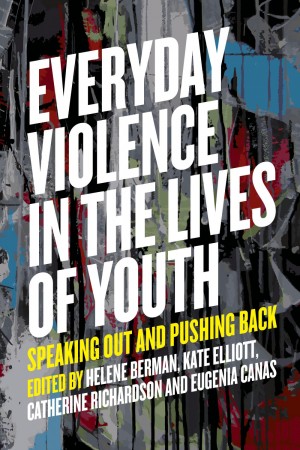| Author(s) | Catherine Richardson/Kinewesquao; Kate Elliott; Michelle Brake |
|---|---|
| Publisher | |
| Publication Year |
Indigenous Youth Use Art in the Fight For Justice, Equality, and Culture
From: Everyday Violence in the Lives of Youth
$1.90
This chapter begins by providing historical context. The authors go on to discuss structural violence today, the experience of working with Metis youth and what they learned from the experience.
Contributors
Catherine Richardson/Kinewesquao
Catherine Richardson/Kinewesquao is a Métis counsellor specializing in violence prevention and recovery. She lives on the territory of the Kanien’kehá:ka Nation and is an associate professor in the School of Social Work at the University of Montreal. Dr. Richardson is a co-founder of the Centre for Response-Based Practice. Her recent research projects relate to violence prevention with Indigenous youth, women and families. She is the author of Belonging Métis and co-editor of Calling Our Families Home: Métis Experiences with Child Welfare and Failure to Protect: Moving Beyond Gendered Responses. Her work has influenced the development of dignity-driven practice in the Child and Family Services of New South Wales, Australia. She is involved in Indigenous community projects and was twice a delegate to the UN Permanent Forum on Indigenous Issues. She is co-authoring a forthcoming book related to Métis social policy.
Kate Elliott
Kate Elliott, bsn, mph, md, is a member of the Métis Nation of Greater Victoria. She has a passion for Indigenous youth engagement and traditional beadwork. Elliott possesses an undergraduate degree in nursing and a master’s in public health and social policy from the University of Victoria. Elliott is completing her residency in Indigenous Family Medicine at the University of British Columbia.
Michelle Brake
Michelle Brake is a young geographer from Halifax looking to change the world with maps. She was a member of the National Youth Advisory Board for the Voices against Violence Project and served as a National Youth Coordinator. She views this work as one avenue to strive for longterm, broad-based, meaningful structural change throughout society. Her technical background and experiences with the project have pushed her to explore the ways that maps can be used as a method for storytelling.







